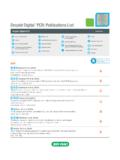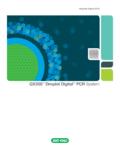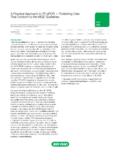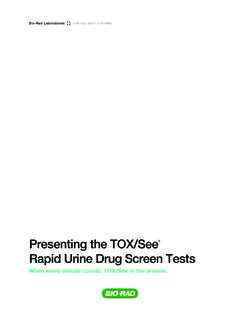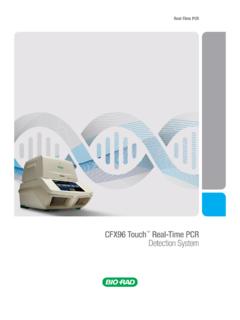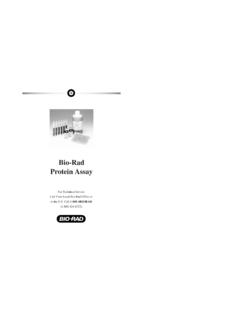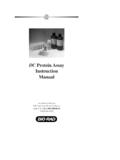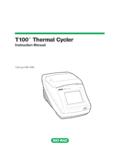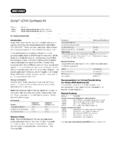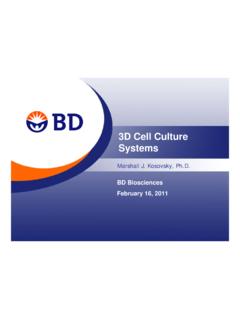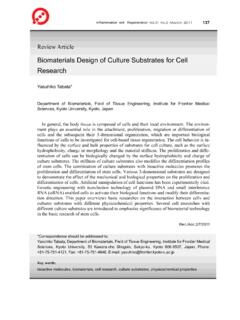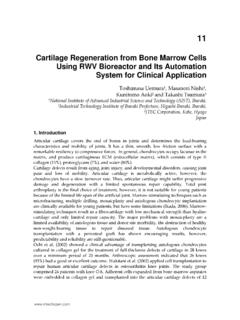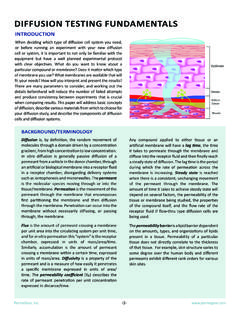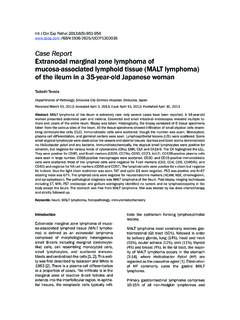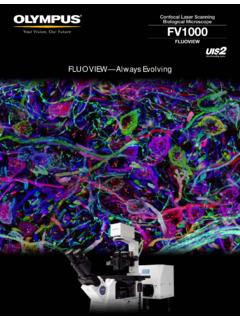Transcription of Instruction Manual - Bio-Rad Laboratories
1 Bio-Plex Pro . Diabetes Assays Instruction Manual For technical support, call your local Bio-Rad office, or in the , call 1-800-424-6723. For research use only. Not for diagnostic procedures. Table of Contents Introduction 1. Principle 2. Kit Contents and Storage 4. Recommended Materials 5. Assay Workflow 6. Important Considerations 7. Detailed instructions 1. Plan Plate Layout 8. 2. Prepare Instrument 9. 3. Prepare Wash Method 10. 4. Prepare Standards 11. 5. Prepare Samples 16. 6. Prepare Coupled Beads 20. 7. Run Assay 22. 8. Read Plate 28. Troubleshooting Guide 35. Appendix: Protease Inhibitors 40. Plate Layout Template 41. Calculation Worksheet 42. Safety Considerations 46. Legal Notices 46. Ordering Information 47. Introduction Bio-Plex Pro diabetes assays are magnetic bead based multiplex assays designed to measure multiple diabetes-related biomarkers in a minimal volume of matrix such as serum, plasma, tissue culture supernatant, or other biological fluids.
2 The biomarkers chosen for these assays are circulating proteins involved in the regulation of glucose metabolism. These multiplex assays are configured for the detection of various metabolic markers in human, mouse, and rat samples. The multiplex assays for human matrices were tested and found to be cross-reactive to at least four common non-human primate (NHP) species, including rhesus, cynomolgus, baboon, and marmoset. The degree of cross-reactivity was profiled according to the ability of each assay to detect these metabolic markers in the sera and mitogen-stimulated peripheral blood mononuclear cell (PBMC) culture supernatant of these animals. The high level of gene homology across the major NHP species may allow the NHP diabetes assays to be used in other species, such as chimpanzees, African green monkey, and pigtail macaques. However, assay performance has not been specifically evaluated in these animals.
3 Cross-Reactivity with Non-Human Primates African green Pigtail Rhesus Cynomolgus Baboon Marmoset Chimpanzee monkey macaque Tested Not tested Bio-Plex Pro assays enable researchers to quantify multiple protein biomarkers in a single well of a 96-well plate in 3 4 hours. These robust immunoassays require as little as l serum or plasma or 50 l cell culture supernatant or other biological fluid. The use of magnetic (MagPlex). beads allows researchers to automate wash steps on a Bio-Plex Pro (or similar) wash station. Magnetic separation offers greater convenience, productivity, and reproducibility compared to vacuum filtration. For more information please visit 1. Principle Technology The Bio-Plex multiplex system is built upon the three core elements of xMAP technology: n Fluorescently dyed microspheres (also called beads), each with a distinct color code or spectral address to permit discrimination of individual tests within a multiplex suspension.
4 This allows simultaneous detection of up to 500 different types of molecules in a single well of the 96-well microplate on the Bio-Plex 3D system, up to 100 different types of molecules on the Bio-Plex 200 system, and up to 50 different types of molecules on the Bio-Plex MAGPIX system n On the Bio-Plex 200 and Bio-Plex 3D systems, a dedicated flow cytometer with two lasers and associated optics to measure the different molecules bound to the surface of the beads. In the Bio-Plex MAGPIX, the entire sample load volume is injected into a chamber where the beads are imaged using LED and CCD technology n A high-speed digital signal processor that efficiently manages the fluorescence data Assay Format Bio-Plex Pro assays are essentially immunoassays formatted on magnetic beads. The assay principle is similar to that of a sandwich ELISA (Figure 1). Capture antibodies directed against the desired biomarker are covalently coupled to the beads.
5 Coupled beads react with the sample containing the biomarker of interest. After a series of washes to remove unbound protein, a biotinylated detection antibody is added to create a sandwich complex. The final detection complex is formed with the addition of streptavidin-phycoerythrin (SA-PE) conjugate. Phycoerythrin serves as a fluorescent indicator or reporter. 2. Biomarker of Interest Streptavidin Magnetic Bead Phycoerythrin Fluorescent Capture Biotinylated Reporter Antibody Detection Antibody Fig. 1. Bio-Plex sandwich immunoassay. Data Acquisition and Analysis Data from the reactions are acquired using a Bio-Plex system or similar Luminex-based reader. When a multiplex assay suspension is drawn into the Bio-Plex 200 reader, for example, a red (635 nm) laser illuminates the fluorescent dyes within each bead to provide bead classification and thus assay identification.
6 At the same time, a green (532 nm) laser excites PE. to generate a reporter signal, which is detected by a photomultiplier tube (PMT). A high-speed digital processor manages data output, and Bio-Plex Manager software presents data as median fluorescence intensity (MFI) as well as concentration (pg/ml). The concentration of analyte bound to each bead is proportional to the MFI of reporter signal. Using Bio-Plex Data Pro software, data from multiple instrument runs can be combined into a single project for easy data management, quick visualization of results, and simple statistical analysis. 3. Kit Contents and Storage Reagents Supplied Bio-Plex Pro diabetes assays are offered in a convenient kit format that includes assay, reagent, and diluent components in a single box (Table 1). Table 1. Contents of Bio-Plex Pro diabetes assays.*. 1 x 96-Well 10 x 96-Well Component Format Format Standard diluent (not included in adiponectin/adipsin assays) 10 ml 100 ml Sample diluent (not included in adiponectin/adipsin assays) 40 ml 80 ml Serum-based diluent (adiponectin/adipsin assays only) 70 ml N/A.
7 Assay buffer 50 ml 500 ml Wash buffer 200 ml L. Detection antibody diluent 5 ml 50 ml Streptavidin-PE (100x) 1 tube 1 tube Filter and/or flat bottom plate (96-well) 1 plate 10 plates Sealing tape 1 pack of 4 10 packs of 4. Assay Quick Guide 1 booklet Coupled magnetic beads (20x) 1 tube 1 tube Detection antibodies (20x) 1 tube 1 tube Standard 1 vial 10 vials * Volumes shown are approximate. Quantities in Bio-Plex Express assays will vary. Storage and Stability Kit contents should be stored at 4 C and never frozen. Coupled magnetic beads and streptavidin-PE should be stored in the dark. All components are guaranteed for a minimum of six months from the date of purchase when stored as specified. 4. Table 2. Recommended materials. Item Ordering Information Bio-Plex Pro Assays Quick Guide 2 Bulletin #10024973 (download at ). Bio-Plex 200 system or Luminex system with HTF Bio-Rad catalog #171-000205.
8 Bio-Plex validation kit Bio-Rad catalog #171-203001. Run the validation kit monthly to ensure optimal performance of fluidics and optics systems Bio-Plex calibration kit Bio-Rad catalog #171-203060. Run the calibration kit daily to standardize fluorescence signal Bio-Plex Pro wash station Bio-Rad catalog #300-34376. For use with magnetic bead based assays only Bio-Plex Pro II wash station Bio-Rad catalog #300-34377. For use with both polystyrene (nonmagnetic) and magnetic bead based assays Bio-Plex handheld magnetic washer Bio-Rad catalog #170-20100. For use with magnetic bead based assays only Bio-Plex Pro flat bottom plates, 40 x 96-well Bio-Rad catalog #171-025001. For magnetic separation on the Bio-Plex Pro wash station Microtiter plate shaker IKA MTS 2/4 shaker for 2 or 4 microplates IKA catalog #320-8000. or Barnstead/Lab-Line Model 4625 plate VWR catalog #57019-600.
9 Shaker (or equivalent capable of 300 1,100 rpm). Bio-Rad Aurum vacuum manifold Bio-Rad catalog #732-6470. For vacuum filtration BR-2000 vortexer Bio-Rad catalog #166-0610. Reagent reservoirs, 25 ml VistaLab catalog #3054-1002. For capture beads and detection antibodies or VistaLab catalog #3054-1004. Reagent reservoir, 50 ml (for reagents and buffers) VistaLab catalog #3054-1006. Pall Life Science Acrodisc, 25 mm PF syringe filter Pall Life Sciences ( m Supor membrane) catalog #4187. Filter plate, 1 x 96-well, clear plastic lid and tray Bio-Rad catalog #171-304502. Titertube Micro test tubes . For preparing replicate standards, samples, and controls Bio-Rad catalog #223-9390. prior to loading the plate Other: 15 ml polypropylene tubes for reagent dilutions, calibrated pipets, pipet tips, sterile distilled water, aluminum foil, absorbent paper towels, or 2 ml microcentrifuge tubes, and standard flat bottom microplate (for calibrating vacuum manifold).
10 5. Assay Workflow Prewet wells (for filter plate only). Add 50 l 1x beads to wells Wash 2 x 100 l Add 50 l standards, blank, samples incubate 1 hr at RT with shaking at 850 rpm Wash 3 x 100 l Add 25 l 1x detection antibody, incubate 30 min at RT with shaking at 850 rpm Wash 3 x 100 l Add 50 l 1x streptavidin-PE, incubate 10 min at RT with shaking at 850 rpm Wash 3 x 100 l Resuspend in 125 l assay buffer, shake at 850 rpm for 30 sec Read plate on Bio-Plex system 6. Important Considerations Instruments and Software The diabetes assays described in this Manual are compatible with all currently available Luminex-based life science research instruments. Assays can be read and analyzed with either Bio-Plex Manager software or Luminex xPONENT software. Assay Procedures Pay close attention to vortexing, shaking, and incubation times and to Bio-Plex reader PMT (RP1) setting, as these have been optimized specifically for each assay panel.

